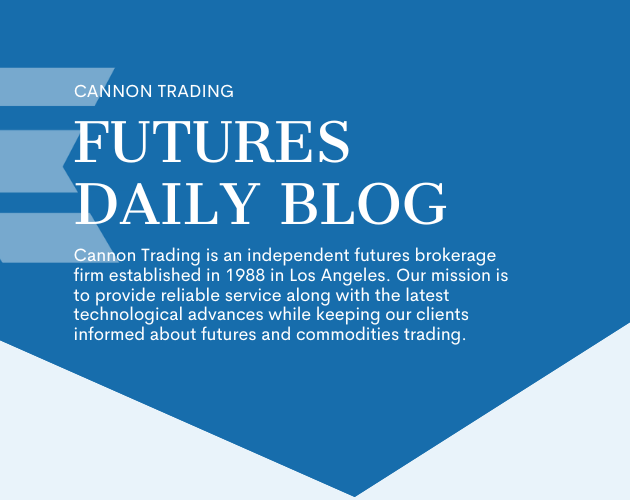
Different Markets for Day Trading, March Bitcoin

|
|

Daily Levels for February 28th, 2025
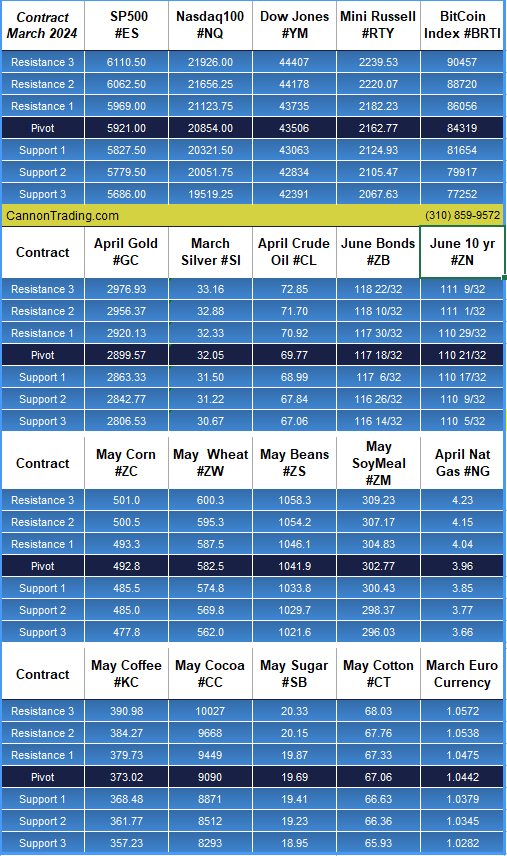

Economic Reports
provided by: ForexFactory.com
All times are Eastern Time (New York)
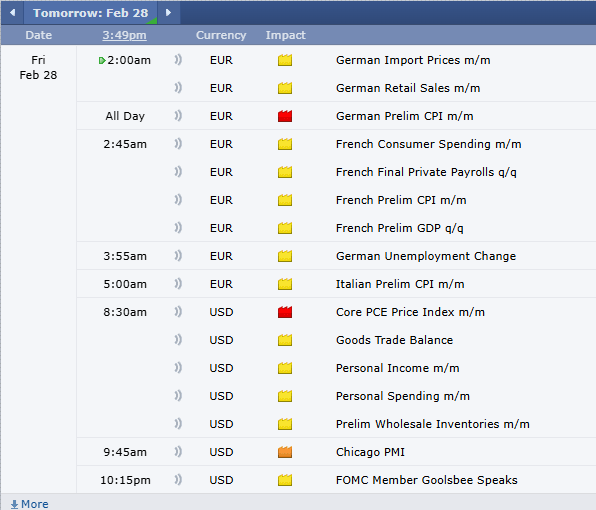
|
||||||||||||||||||||||||||||
|
||||||||||||||||||||||||||||
|


|
|



provided by: ForexFactory.com
All times are Eastern Time (New York)

|
||||||||||||||||||||||||||||
|
||||||||||||||||||||||||||||
|


|
|
May Sugar Chart for your review below!
May sugar is completing its second upside PriceCount objective to the 19.96 area. It would be normal to get a near term reaction from this level in the form of a consolidation or corrective trade. At this point, if the chart can sustain further strength, the third count would project a possible run to the 21.57 area which is consistent with a challenge of the fall highs.
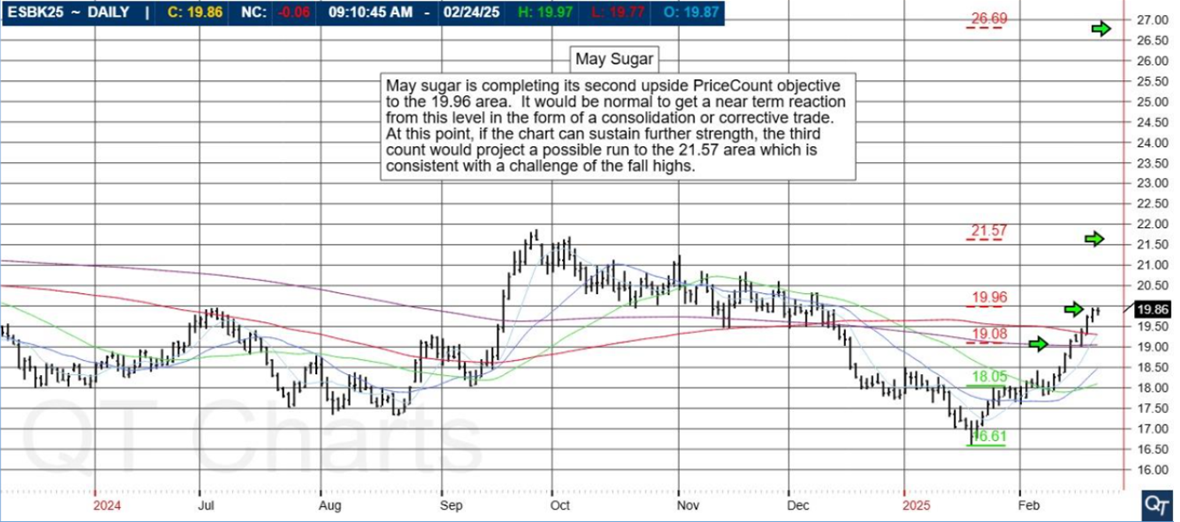
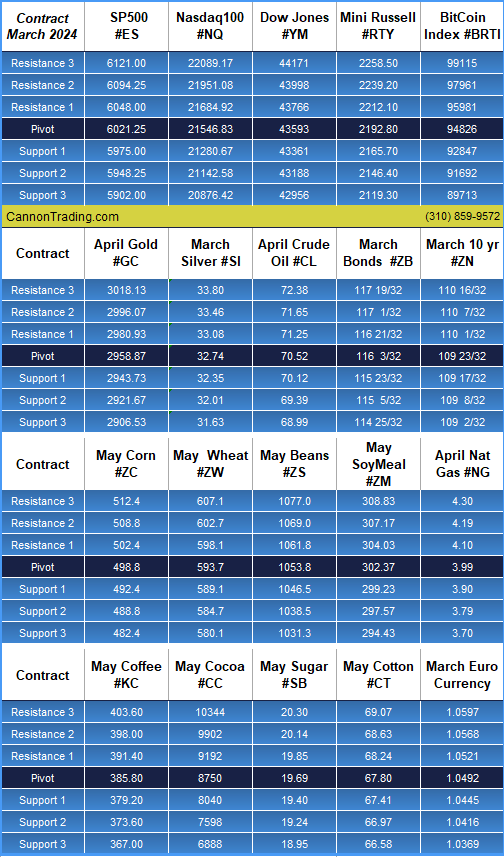

provided by: ForexFactory.com
All times are Eastern Time (New York)
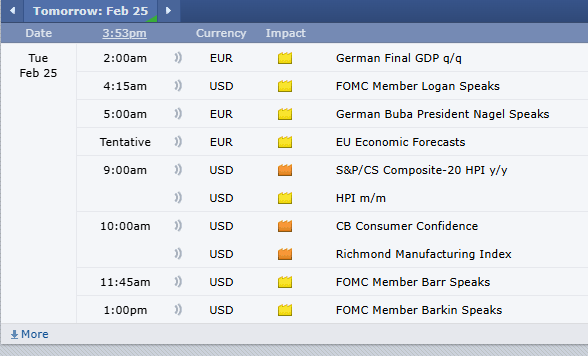
|
||||||||||||||||||||||||||||
|
||||||||||||||||||||||||||||
|


It has been a volatile short trading week post President’s Day long weekend.
Wild swings across the board with softs and metals leading the way.
Tomorrow we have new home sales, flash PMI and University of Michigan reports which will be watched closely for the inflation outlook.
Watch both natural gas and copper as these markets are establishing a tend to the upside.
| Would you like to get real
time news and markets outlook via videos updates daily? Simply visit us on our market research section. FREE to clients and prospects! |
| Daily Updates & Market Research |

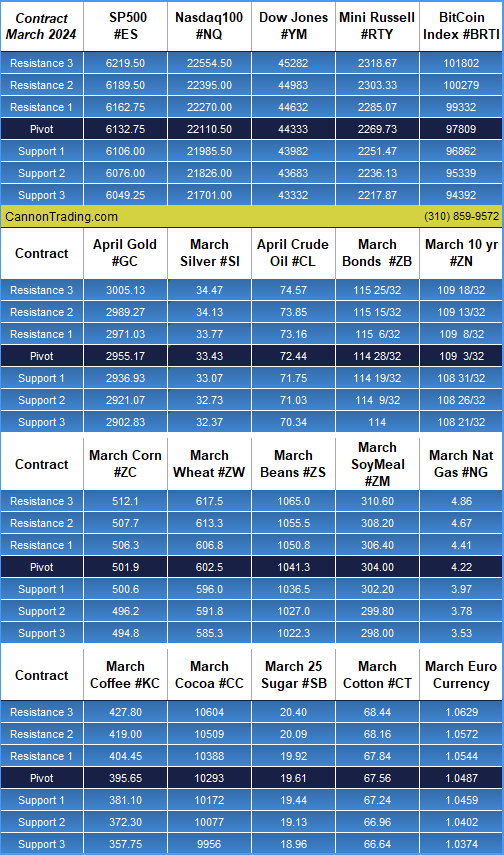

provided by: ForexFactory.com
All times are Eastern Time (New York)
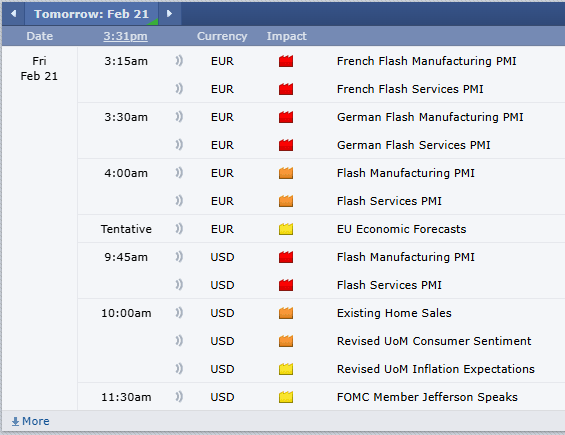
|
||||||||||||||||||||||||||||
|
||||||||||||||||||||||||||||
|
The corn futures contract remains one of the most actively traded agricultural commodities in the futures markets. As global demand for corn continues to rise due to its essential role in food production, animal feed, and ethanol production, futures traders seeking profitable opportunities often turn to corn futures as a key component of their portfolio.
Extreme weather conditions are expected to continue affecting global corn production. Unpredictable droughts and flooding could lead to significant price swings in corn futures contracts.
The global push for renewable energy sources will likely keep ethanol demand high, increasing the need for corn as a primary biofuel ingredient.
Fertilizer and transportation costs have been climbing, impacting production expenses and potentially pushing corn prices higher in 2025.
The U.S.-China trade relationship remains a key factor. Tariffs or trade barriers could significantly impact corn exports and futures prices.
Historically, corn futures contracts have shown cyclical patterns influenced by weather conditions, government policies, and technological advancements in agriculture. The 2012 drought, for example, caused record-high prices, while increased yields in the following years led to price stabilization. Other crop futures contracts, such as wheat and soybeans, have followed similar trends, often correlating with corn prices due to their shared agricultural and economic factors.
For traders looking to engage in futures contract trading, selecting a reputable futures trading broker is essential. Cannon Trading Company stands out for several reasons:
The corn futures contract presents numerous opportunities for profit in 2025. By staying informed on market trends, monitoring key reports, and partnering with a reputable futures trading broker like Cannon Trading Company, traders can navigate the complexities of futures contract trading with confidence.
For more information, click here.
Ready to start trading futures? Call us at 1(800)454-9572 – Int’l (310)859-9572 (International), or email info@cannontrading.com to speak with one of our experienced, Series-3 licensed futures brokers and begin your futures trading journey with Cannon Trading Company today.
Disclaimer: Trading Futures, Options on Futures, and retail off-exchange foreign currency transactions involve substantial risk of loss and are not suitable for all investors. Past performance is not indicative of future results. Carefully consider if trading is suitable for you in light of your circumstances, knowledge, and financial resources. You may lose all or more of your initial investment. Opinions, market data, and recommendations are subject to change at any time.
Important: Trading commodity futures and options involves a substantial risk of loss. The recommendations contained in this article are opinions only and do not guarantee any profits. This article is for educational purposes. Past performances are not necessarily indicative of future results.
This article has been generated with the help of AI Technology and modified for accuracy and compliance.
Follow us on all socials: @cannontrading


|
|

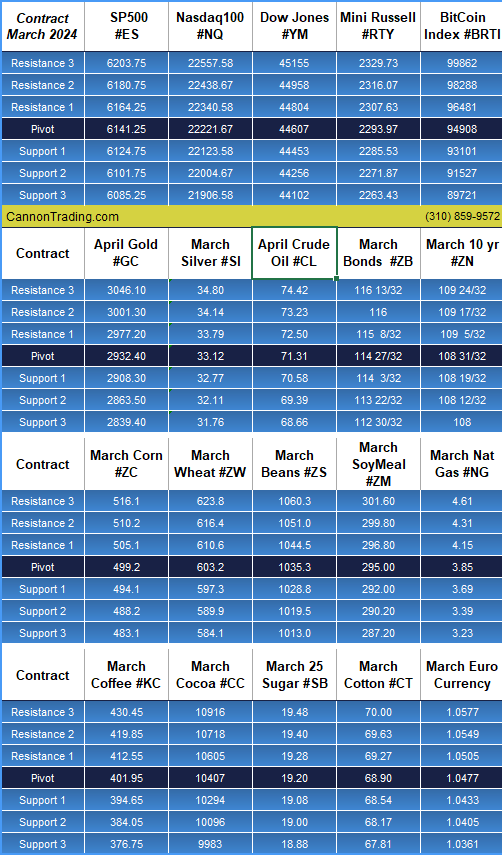

provided by: ForexFactory.com
All times are Eastern Time (New York)
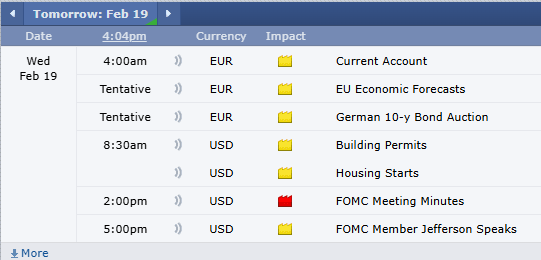
|
||||||||||||||||||||||||||||
|
||||||||||||||||||||||||||||
|
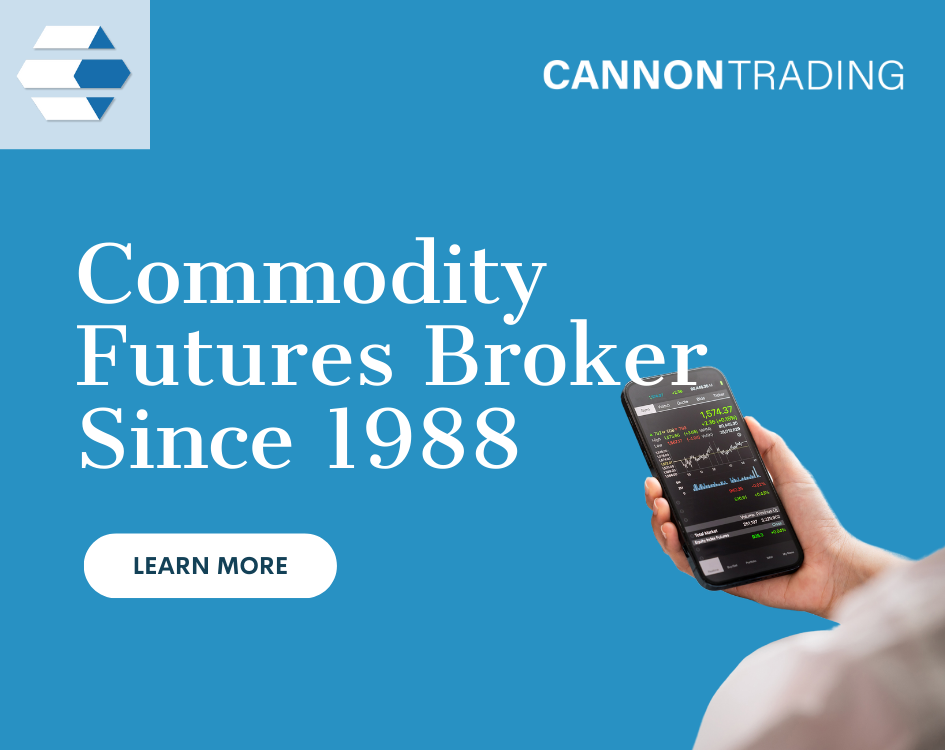

Natural Gas Hot Market of the Week + Monday, February 17th is Presidents Day here in the US.
Many markets will close at noon central and some markets are closed.
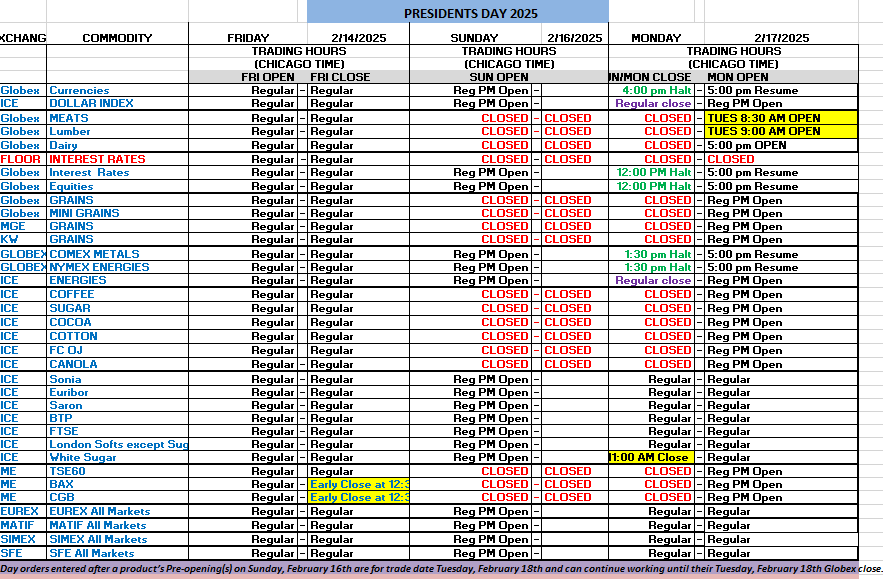
|
|

Hot market of the week is provided by QT Market Center, A Swiss army knife charting package that’s not just for Hedgers, Cooperatives and Farmers alike but also for Spread traders, Swing traders and shorter time frame application for intraday traders with a unique proprietary indicator that can be applied to your specific trading needs.
March Natural Gas is attempting to resume its rally as it challenges the January high. At this point, new sustained highs would project a potential run to the low percentage fourth upside PriceCount objective to the 4.06 area.
PriceCounts – Not about where we’ve been , but where we might be going next!

|
|

|
|
|
|
||||||||||||||||||||||||||||
|
||||||||||||||||||||||||||||
|


|
|
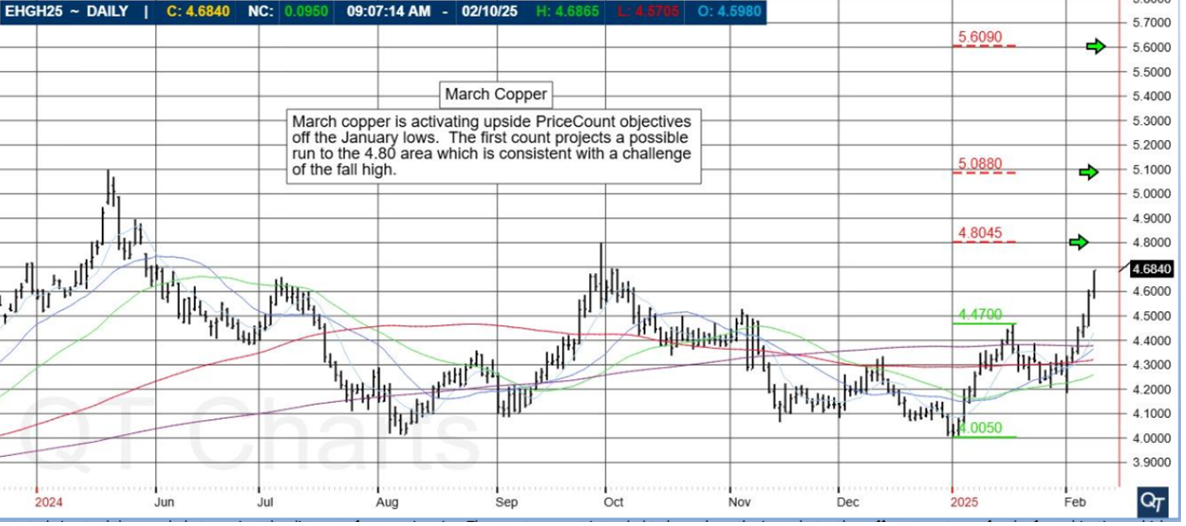
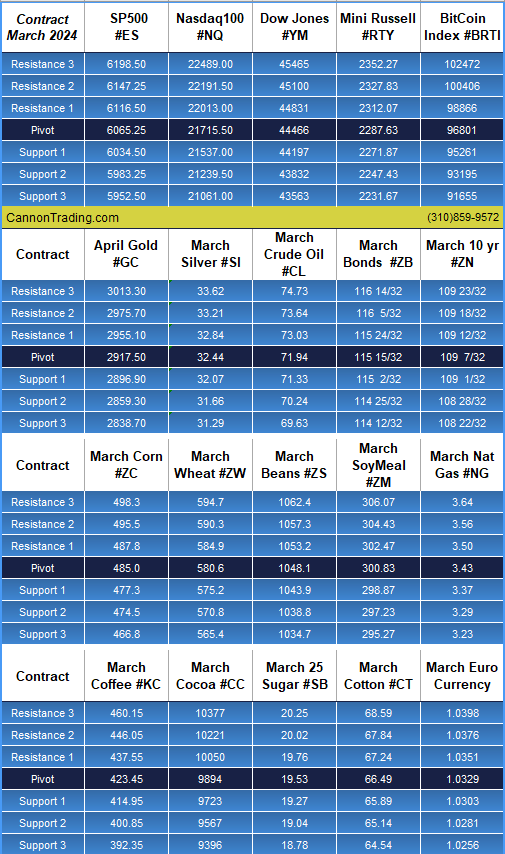

provided by: ForexFactory.com
All times are Eastern Time ( New York)

|
||||||||||||||||||||||||||||
|
||||||||||||||||||||||||||||
|

|
|
|
|

Hot market of the week is provided by QT Market Center, A Swiss army knife charting package that’s not just for Hedgers, Cooperatives and Farmers alike but also for Spread traders, Swing traders and shorter time frame application for intraday traders with a unique proprietary indicator that can be applied to your specific trading and options on futures needs.
December 25 Corn
April Hogs satisfied a second upside PriceCount objective before turning sideways with a range bound trade. At this point, IF the chart can resume its rally with new sustained highs, the third count would project a potential run to the 100.96 area.
PriceCounts – Not about where we’ve been, but where we might be going next!
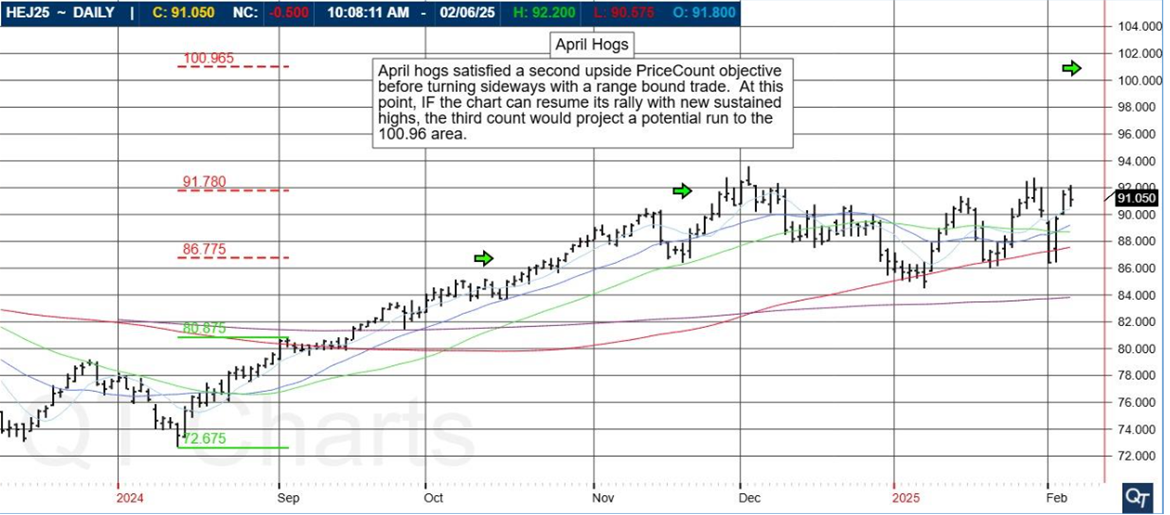
|
|
|
|
|
|
|
||||||||||||||||||||||||||||
|
||||||||||||||||||||||||||||
|
The Russell 2000 Futures contract is a cornerstone of the futures trading world, providing traders with a robust tool to speculate on or hedge against movements in small-cap equity markets. Since its inception, the Russell 2000 Futures, often abbreviated as RUT 2000 Futures, has undergone significant evolution, becoming a vital component of modern futures trading. This piece explores its origins, development, and role in the market, while highlighting why trading futures with Cannon Trading Company is an exceptional choice for traders at all experience levels.
The Russell 2000 Index, launched in 1984 by the Frank Russell Company, tracks the performance of the smallest 2,000 stocks within the Russell 3000 Index, representing U.S. small-cap companies. The introduction of the Russell 2000 Futures Contract followed shortly after, in response to increasing demand for products enabling investors to trade on the performance of small-cap stocks in a standardized, liquid manner.
Several financial pioneers were instrumental in bringing the Russell 2000 Futures to life. William F. Sharpe, a Nobel laureate and consultant to the Frank Russell Company, helped refine the methodology for index construction. His contributions ensured that the Russell indices offered an accurate reflection of market segments.
The Chicago Mercantile Exchange (CME), a leading futures exchange, played a central role in facilitating the trading of these contracts. Key figures at CME, such as Leo Melamed, known as the “father of financial futures,” were advocates for innovation in derivatives markets. Under Melamed’s leadership, the CME expanded its offerings, including equity index futures like the RUT 2000 Futures.
When trading began, many small-cap companies featured in the Russell 2000 were relatively unknown. Traders found the RUT 2000 Futures offered an efficient way to manage exposure to this high-risk, high-reward market segment. Anecdotes from early trading sessions illustrate the volatility of small-cap stocks and the corresponding opportunities in the futures market. For instance, a trader who identified a trend in burgeoning tech startups in the early 1990s could leverage RUT 2000 Futures to magnify returns or hedge against broader market risks.
One notable early trade occurred during the dot-com boom. A hedge fund manager, anticipating a bubble in small-cap tech stocks, used Russell 2000 Futures contracts to short the index. When the bubble burst, this strategic use of futures resulted in substantial profits for the fund, solidifying the contract’s reputation as a powerful tool for both speculation and risk management.
Over the decades, the Russell 2000 Futures have evolved in terms of accessibility, technology, and utility. Originally traded in open-outcry pits, the advent of electronic trading platforms revolutionized futures trading. CME’s Globex platform, introduced in 1992, allowed traders worldwide to access RUT 2000 Futures, increasing liquidity and efficiency.
The modern Russell 2000 Futures contract has standardized terms that make it attractive to a broad range of traders. Key specifications include:
These attributes make it suitable for individual traders and institutional investors alike. Additionally, the introduction of E-mini and Micro E-mini RUT Futures has lowered barriers to entry, enabling smaller traders to participate without excessive capital requirements.
Consider a trader bullish on small-cap stocks due to favorable economic conditions. With the Russell 2000 Index trading at 1,800 points, the trader buys two RUT 2000 Futures contracts at this level. Each contract’s notional value is $90,000 ($50 × 1,800), requiring a margin deposit of roughly $6,000 per contract.
The index rises to 1,850, yielding a gain of 50 points. For two contracts, the profit is $5,000 ($50 × 50 points × 2 contracts). This example demonstrates how RUT 2000 Futures enable traders to amplify returns with minimal upfront capital, though the risks of leveraged losses must also be acknowledged.
The evolution of futures trading platforms and brokerage services has been crucial in shaping the market. Futures brokers serve as the backbone of trading, offering access to platforms, market data, and educational resources.
Cannon Trading Company has established itself as a top-tier futures broker, earning 5-star ratings on TrustPilot and accolades for its decades of experience. Here’s why Cannon Trading is a standout choice for trading futures contracts:
In 2020, a small-cap mutual fund manager faced uncertainty amid the COVID-19 pandemic. Concerned about potential market downturns, they used RUT 2000 Futures to hedge their portfolio. By selling futures contracts, the manager mitigated losses as the index fell, demonstrating the contracts’ value for risk management.
An individual futures trader, recognizing strong earnings growth in small-cap companies in 2021, decided to go long on E-mini RUT Futures. With precise entry and exit strategies, the trader achieved a 25% return on initial margin, highlighting the profit potential of leveraged futures trading.
As technology advances, the Russell 2000 Futures market will continue to grow. Innovations like AI-driven trading algorithms and blockchain-based clearing systems promise to enhance efficiency and transparency. Moreover, the increasing globalization of markets means more traders from diverse backgrounds will access RUT 2000 Futures, further boosting liquidity.
The Russell 2000 Futures contract has evolved from a niche product into a vital instrument for traders worldwide. With its origins rooted in the vision of financial pioneers, the RUT 2000 Futures now serve as a powerful tool for hedging and speculation in the small-cap equity market. For traders seeking an exceptional futures broker, Cannon Trading Company stands out for its unparalleled platform selection, regulatory excellence, and client-focused approach. Whether you are a novice futures trader or an experienced market participant, Cannon Trading provides the resources and support necessary to succeed in the dynamic world of futures trading.
For more information, click here.
Ready to start trading futures? Call us at 1(800)454-9572 – Int’l (310)859-9572 (International), or email info@cannontrading.com to speak with one of our experienced, Series-3 licensed futures brokers and begin your futures trading journey with Cannon Trading Company today.
Disclaimer: Trading Futures, Options on Futures, and retail off-exchange foreign currency transactions involve substantial risk of loss and are not suitable for all investors. Past performance is not indicative of future results. Carefully consider if trading is suitable for you in light of your circumstances, knowledge, and financial resources. You may lose all or more of your initial investment. Opinions, market data, and recommendations are subject to change at any time.
Important: Trading commodity futures and options involves a substantial risk of loss. The recommendations contained in this article are opinions only and do not guarantee any profits. This article is for educational purposes. Past performances are not necessarily indicative of future results.
This article has been generated with the help of AI Technology and modified for accuracy and compliance.
|
|
|
|